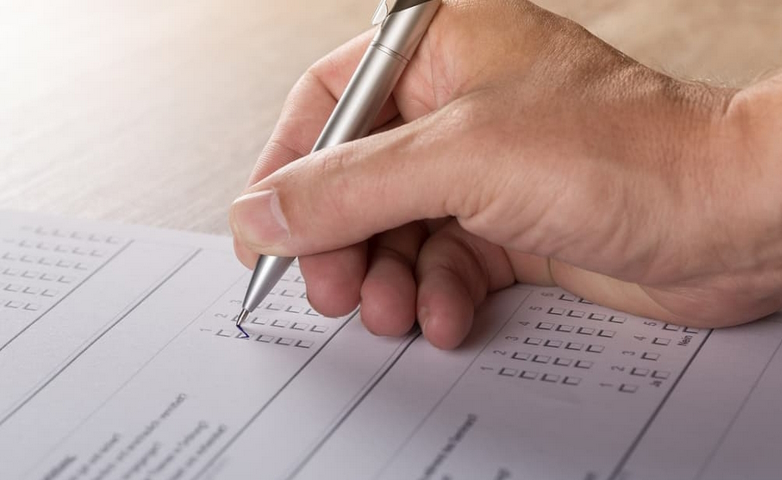How to Detect Suspicious Email Patterns and Improve Survey Accuracy
- Written by Cindy Mielke

Surveys can be a goldmine for insights. But their value can often be undermined by the presence of counterfeit email addresses, leading to skewed data and unnecessary cost overruns in validation.
By embracing a unique approach to survey management that involves analyzing specific patterns in email addresses to identify possible fraudulent activities, you can maintain the integrity of survey data and improve the overall data collection process.
The Importance of Authenticity in Survey Emails
The widespread use of temporary or disposable email addresses, often used for single-use purposes like getting discounts or registering for brief services, poses a big problem for collecting accurate survey data.
While these emails are good for avoiding unwanted emails and ads, they make it difficult to trust the responses in surveys. Since these email addresses don't last long, contacting someone again for more details or asking them to finish a survey is almost impossible.
If one person uses several fake email addresses to answer a survey, it causes problems with the data. This happens because it looks like the responses are from different people, but they're actually all from the same person. This skews the survey results because the answers don't truly reflect what various customers think and feel.
Using these fake emails too much in surveys creates unfairness and makes it hard to get accurate and meaningful insights from the survey data.
Strategies to Prevent Fraud in Survey Execution
Even though the problems caused by fake email addresses in surveys might seem tough to handle, there are effective ways to deal with them. Here's some important steps you can take to make sure emails in your survey are real and the responses are accurate and reliable.
Create Random or Rotating Questions
To prevent cheating in surveys, frequently altering the questions or presenting varied questions to different participants can be effective. This approach makes it challenging for individuals to anticipate the questions and adjust their responses in a deceitful manner.
Encountering new or varied questions each time can deter respondents from repeating previous answers too. This method curbs dishonesty and minimizes response bias.
Respondents are less inclined to repeat their earlier answers when faced with a continuously evolving set of questions, leading to responses more accurately representing their genuine opinions.
Strengthen Survey Security With Password Protection
Introducing password protection is a key tactic to shield your surveys from fraudulent responses. Allowing only those with a specific password to access the survey effectively deters unauthorized users and bots from completing them.
In addition to safeguarding the survey's integrity, password protection also improves the security and confidentiality of respondent data. This reassures participants that their information is handled carefully, building trust and encouraging more individuals to complete your surveys.
Use a Survey Solution with IP Blocking
IP blocking is an effective measure against fraudulent activities in surveys. It operates by identifying and barring IP addresses known for suspicious activities, restricting their access to your survey and preventing the submission of false responses.
This blocking can be executed either manually, in response to witnessing malicious activity, or automatically through predefined rules, such as detecting multiple submissions from the same IP address in quick succession. Some survey tools also offer enhanced functionalities, like regional IP blocking, which is particularly beneficial for surveys at specific locations.
Rely on a CAPTCHA Service
Incorporating a CAPTCHA service is a practical approach to mitigate fraudulent activities in surveys. CAPTCHA, an acronym for "Completely Automated Public Turing Test to Tell Computers and Humans Apart," excels in differentiating real users from automated bots. It requires respondents to perform simple tasks, like recognizing objects in images or solving straightforward math problems, to proceed with their survey submissions.
The use of CAPTCHA is effective in curbing the influx of automated bot responses, ensuring that your survey participants are authentic. This step not only boosts the accuracy and trustworthiness of your data but also enhances the overall security of your surveys, safeguarding them against automated threats and potential data breaches.
Create a Consent Form
Incorporating a consent form at the start of a survey upholds ethical research standards and acts as another barrier against fraudulent responses. Consent forms require respondents to acknowledge their willingness to participate and commit to providing honest answers. Offering incentives like bulk gift cards for employees—which can also be used for work anniversary gifts—can be a great way to encourage genuine participation.
The consent form should clearly outline the survey's objectives and how the collected data is used and reassure participants about the anonymity and confidentiality of their responses. It can also mention the implications of submitting false information.
Utilize Response Pattern Analysis
Response pattern analysis is an effective technique for detecting survey fraud. By examining the responses, you can identify irregularities that suggest fraudulent behavior. Signs of fraud include repetitive answers across questions or finishing the survey unusually fast.
Analyzing response origins is also crucial. Receiving multiple responses from the same IP address in a short span could point to either bot activities or a single individual submitting several responses.
More sophisticated analysis tools can also uncover more subtle fraud indicators. They can detect anomalies in the language of open-ended responses, differentiate them from typical human replies, and indicate the potential use of artificial intelligence.
Make Sure Your Surveys Are Completed Accurately
Protecting your surveys from fraudulent emails and bots is crucial for maintaining the validity of your data. By implementing these strategies, you can safeguard your surveys and ensure the information collected provides valuable insights for your business.
Cindy Mielke is Tango Card's Vice President, Strategic Partnerships, and a Certified Professional of Incentive Management. Her passion is helping teammates, clients, and partners achieve success. A strong advocate for the incentive industry, Cindy received the Karen Renk Award and the Lifetime Achievement Award from the Incentive Marketing Association (IMA) in 2019. She currently serves on the IMA board of directors and on the board of the Incentive and Engagement Solutions Providers (IESP).








